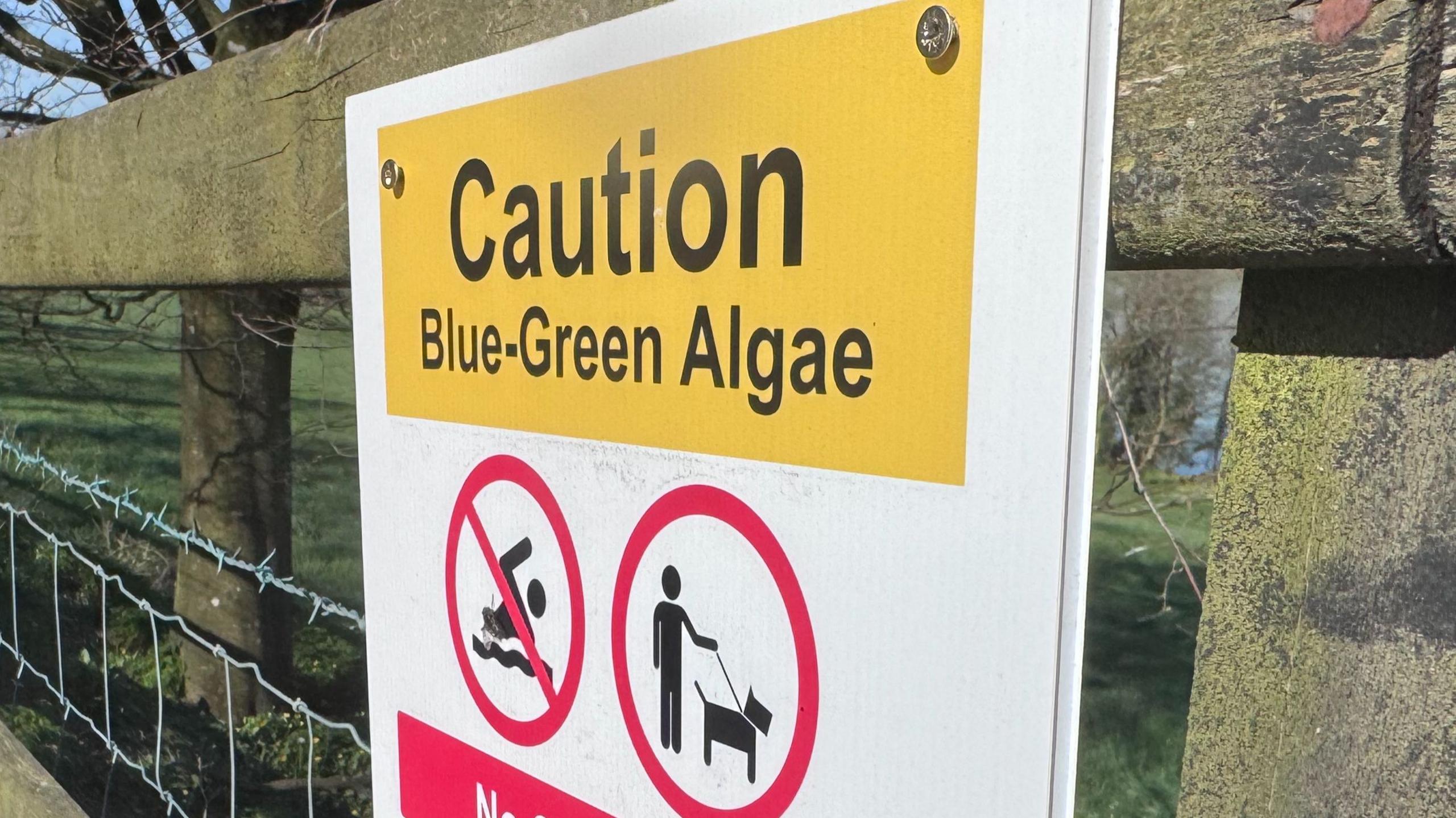Blue-green algae blight continues as projects aim to tackle blooms
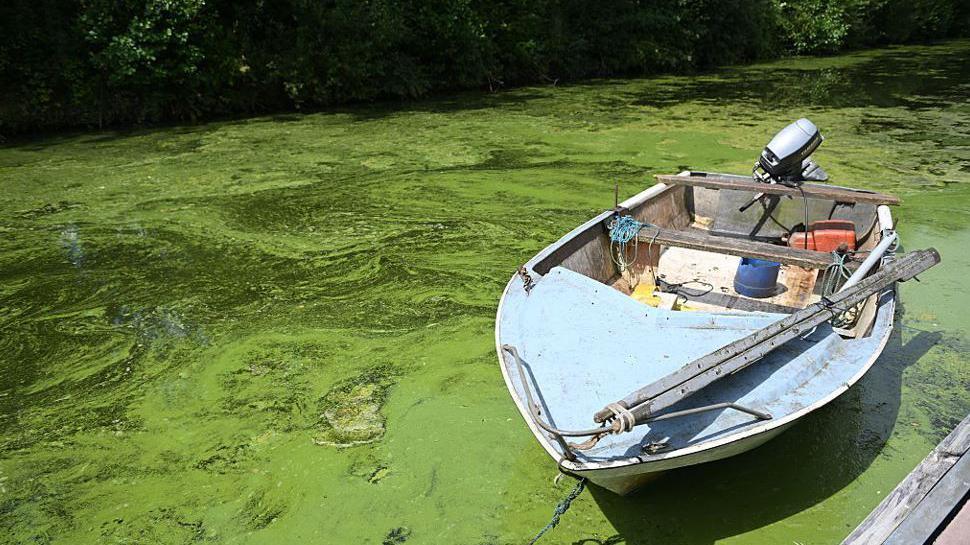
The blooms are now a recurrent event, not confined to summer
- Published
The sight of Northern Ireland's waterways being covered in slimy, potentially toxic blue-green algae has become a regular occurrence in recent years - and 2025 is no different.
The algae has been detected almost 100 times across Northern Ireland since the start of the year, with the majority of sightings in Lough Neagh and the Lower Bann, as well as Lough Erne.
Lough Neagh, the UK's largest freshwater lake, has been blighted by large blooms of the potentially toxic algae in recent years.
With these blooms becoming a recurrent event, not just confined to summer, and scientists warning they are likely to keep happening for many years to come - how bad is the issue and what's being done about it?
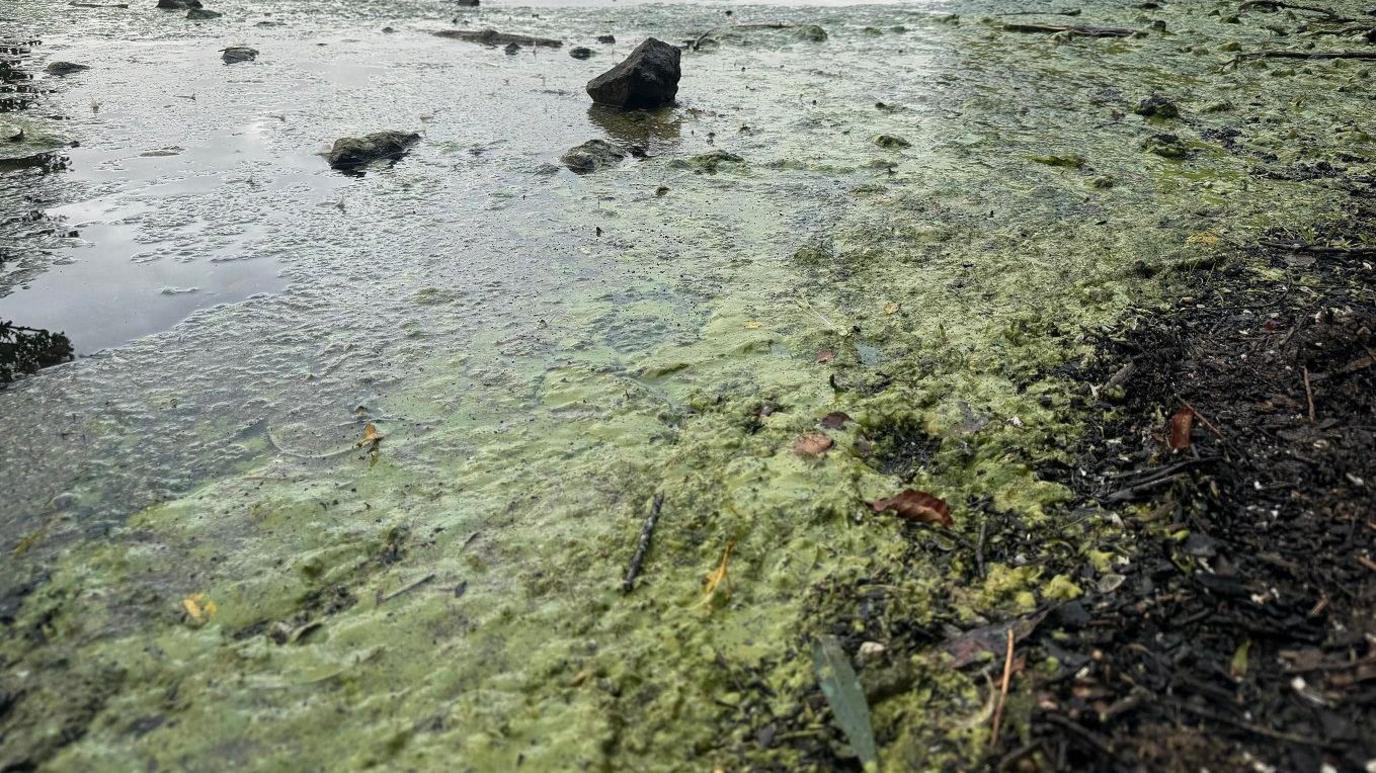
Blue-green algae pictured at Rae's Wood, County Antrim, on the shores of Lough Neagh
How bad is the blue-green algae problem at Lough Neagh?
A year ago the Northern Ireland Executive approved a plan to tackle the crisis at Lough Neagh.
The Department of Agriculture, Environment and Rural Affairs (Daera) said 14 actions have been delivered and 22 are progressing.
Some of those actions have involved looking at trialling potential solutions, including bubble buoys and other initiatives - but in the meantime, questions persist over the condition of the lough.
Fishermen have blamed water quality for playing a role in the cancellation of the eel-fishing season.
The lough's health was further spotlighted by a joint visit by the Church Leaders Group (Ireland) earlier this month.
The group includes Archbishops Eamon Martin and John McDowell, leaders of the Catholic Church and Church of Ireland; Rev Dr Trevor Gribben, moderator of the Presbyterian Church; and Rev Alan Wardlow, president of the Methodist Church in Ireland.
They went to Maghery Point and Coney Island and met fishermen, local residents and campaigners.
Archbishop Martin said the lough was a "microcosm" of the greater issues facing the planet, adding that we "have to be very conscious of the threats and the difficulties that are facing the earth at this time".
The State of Us: How can we fix Lough Neagh?
With blue-green algae blooms regularly recurring - how bad is the issue and what's being done about it?
Tara Mills and Declan Harvey speak to Louise Cullen about potential solutions to the algae problem.
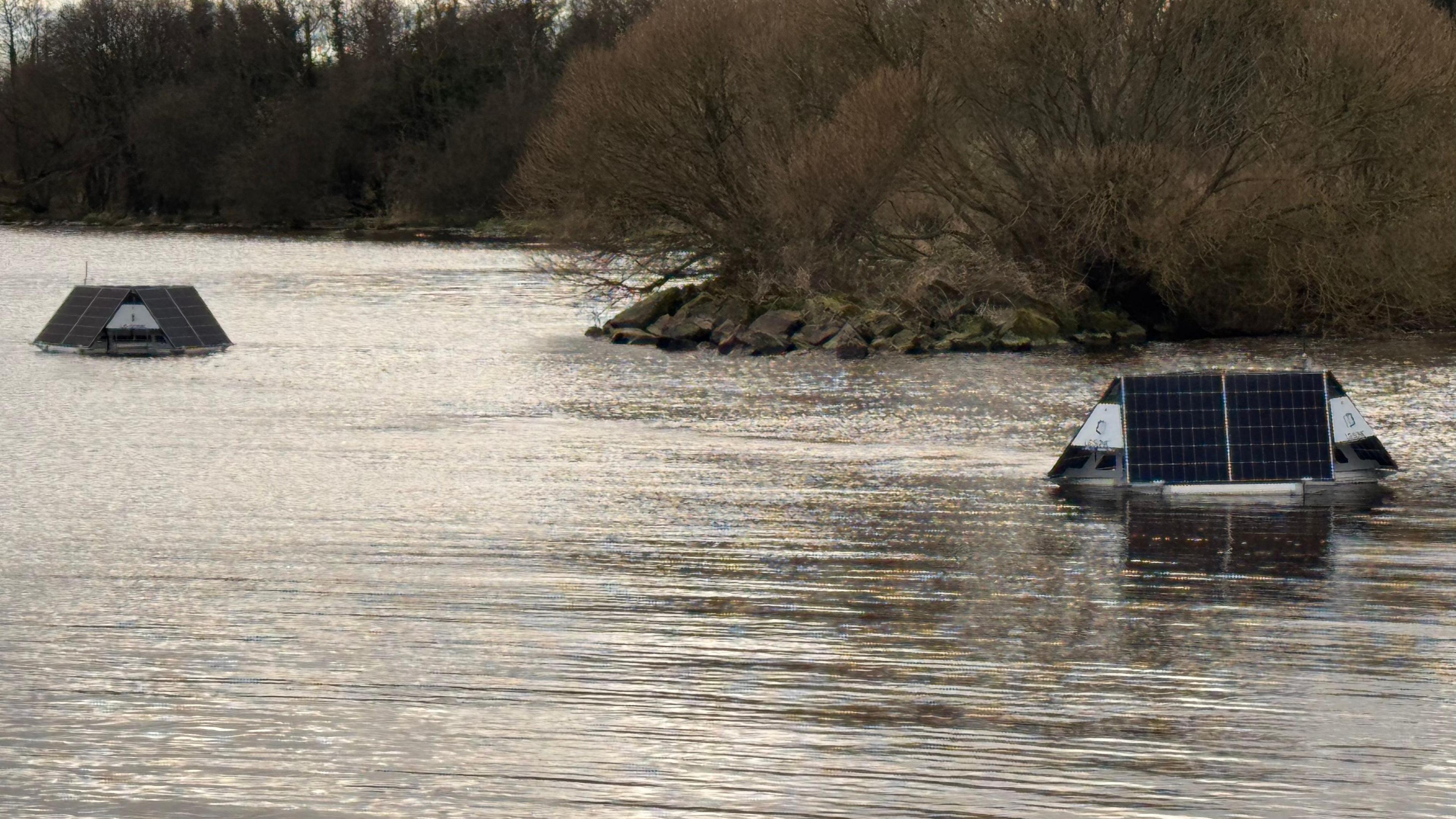
Solar buoys are being used to generate a "bubble barrier" to manipulate algae as it blooms
Although blue-green algae and other blooms are causing problems in many waterways all over the world, Lough Neagh poses a particular challenge.
It has many designations and protections because of its importance for wildlife and biodiversity.
It is also a leisure and commercial resource - and let's not forget that it is vast, about 400 sq km, with a catchment almost 10 times that.
Almost half of Northern Ireland's land ultimately drains into Lough Neagh, meaning that everything that goes onto that land - from agriculture, industry, wastewater, septic tank seepage and households - has the potential to affect the lough.
It also provides 40% of Northern Ireland's drinking water, including half of Belfast's.
All these factors combine to make monitoring and managing problems very complicated.
What is blue-green algae and why is it a problem?
- Published5 August 2024
What action is being taken at Lough Neagh?
Potential solutions to the blue-green algal problem in Lough Neagh have been piloted as part of the executive's action plan.
There are two small business research initiatives are under way, looking at solutions and using technology to monitor the algae. The second phase of both is due to be announced soon.
Among the potential solutions is a "bubble barrier".
This involves two solar-powered buoys using compressed air to generate bubbles in a pattern that could push the algae into or out of specific areas.
Another initiative looked to space, using drone and satellite technology to predict and detect when and where algal blooms may form.
Other schemes, meanwhile, may seek to address the main source of pollution in the lough - from agricultural sources.
The Sustainable Utilisation of Livestock Slurry (SULS) was launched before the action plan but is included in it - it aims to tackle Northern Ireland's manure surplus.
The Soil Nutrient Health Scheme is in its final year, with every field in Northern Ireland being tested for its nutrient content.
That should help farmers target fertiliser more efficiently and help reduce the phosphorus surplus in the soil - issues that can be contributing factors to blooms.
However, it is likely to be several years before these or any of the other potential solutions could become active, or have a direct impact on the lough.
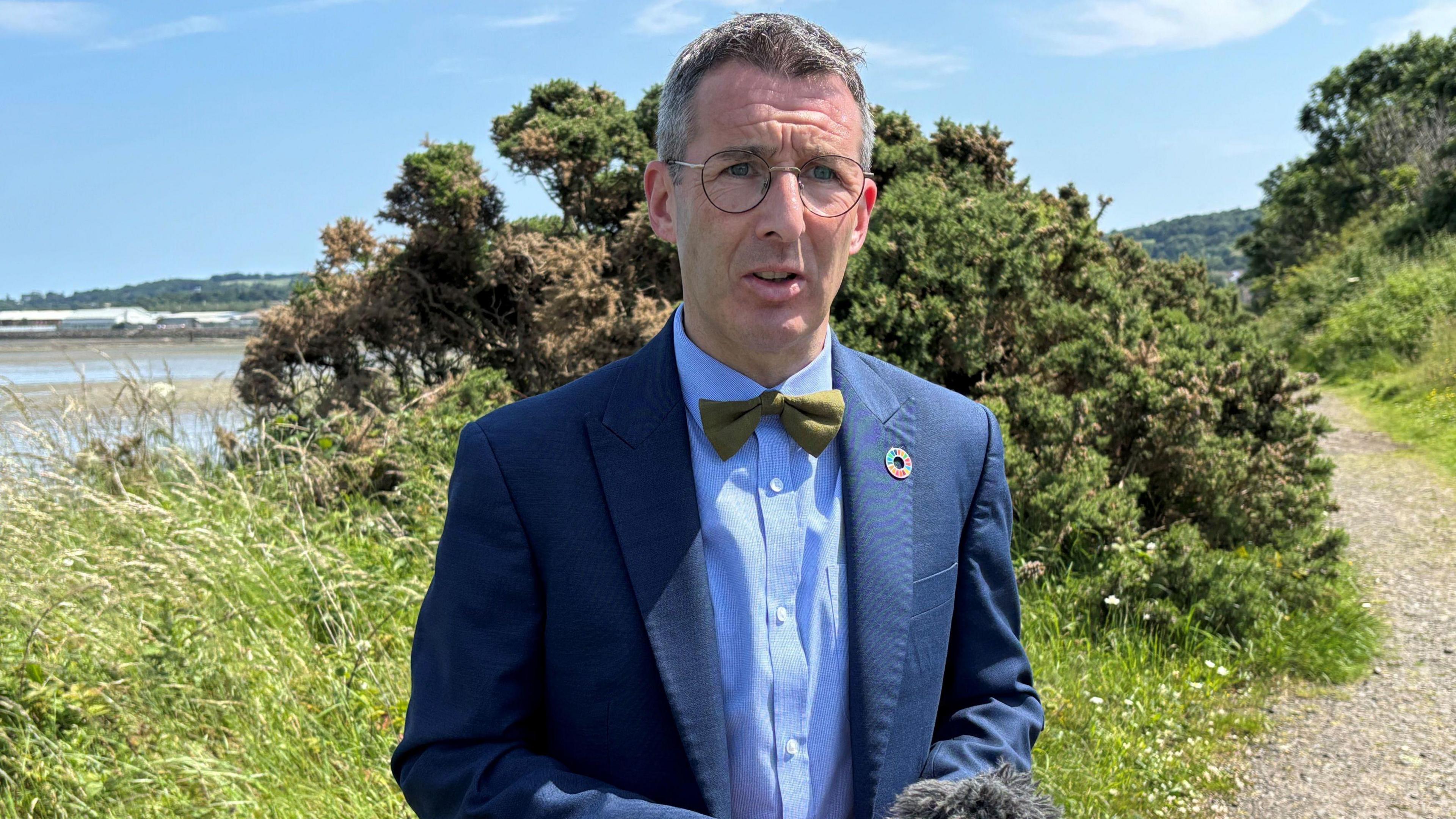
Last year the Daera minister launched a research project to explore solutions to tackle blue-green algae
More immediately, the Nutrients Action Programme (NAP) seeks to address water pollution from agricultural sources.
It was first introduced in 2007 and led to improvements in water quality before the introduction of the Going for Growth strategy, which promoted the intensification of agriculture.
That, Daera said, largely wiped out any gains the first five years of the NAP had made.
This latest version of NAP is several years overdue, and the Office for Environmental Protection has signalled its interest in the delay.
But Agriculture and Environment Minister Andrew Muir faced calls in the assembly to cancel the consultation on the draft plan.
After he announced a plan to convene a stakeholder group that would review the responses, followed by a second consultation, farming groups encouraged members to take part in the process.
A new NAP is already several years overdue and is a legal obligation.
The initial consultation closed at the end of July.
After the review group completes its work and the second consultation is held, it is hoped a final draft will be brought to the executive for approval as soon as possible.
In a statement Daera said work will continue alongside progressing the remaining actions, including the required review of the Nutrients Action Programme, with consultation responses being analysed and a Stakeholder Task and Finish Group to be established.
The department said water quality monitoring outreach events have been delivered to farm businesses.
The statement said: "The minister has been consistently on the record that the separate regulatory regime with NI Water on wastewater known as SORPI needs to change and will be bringing proposals to executive colleagues on the matter over the time ahead."
The minister said there are no quick fixes to the situation at Lough Neagh, with problems "decades in the making and decades in the fixing".
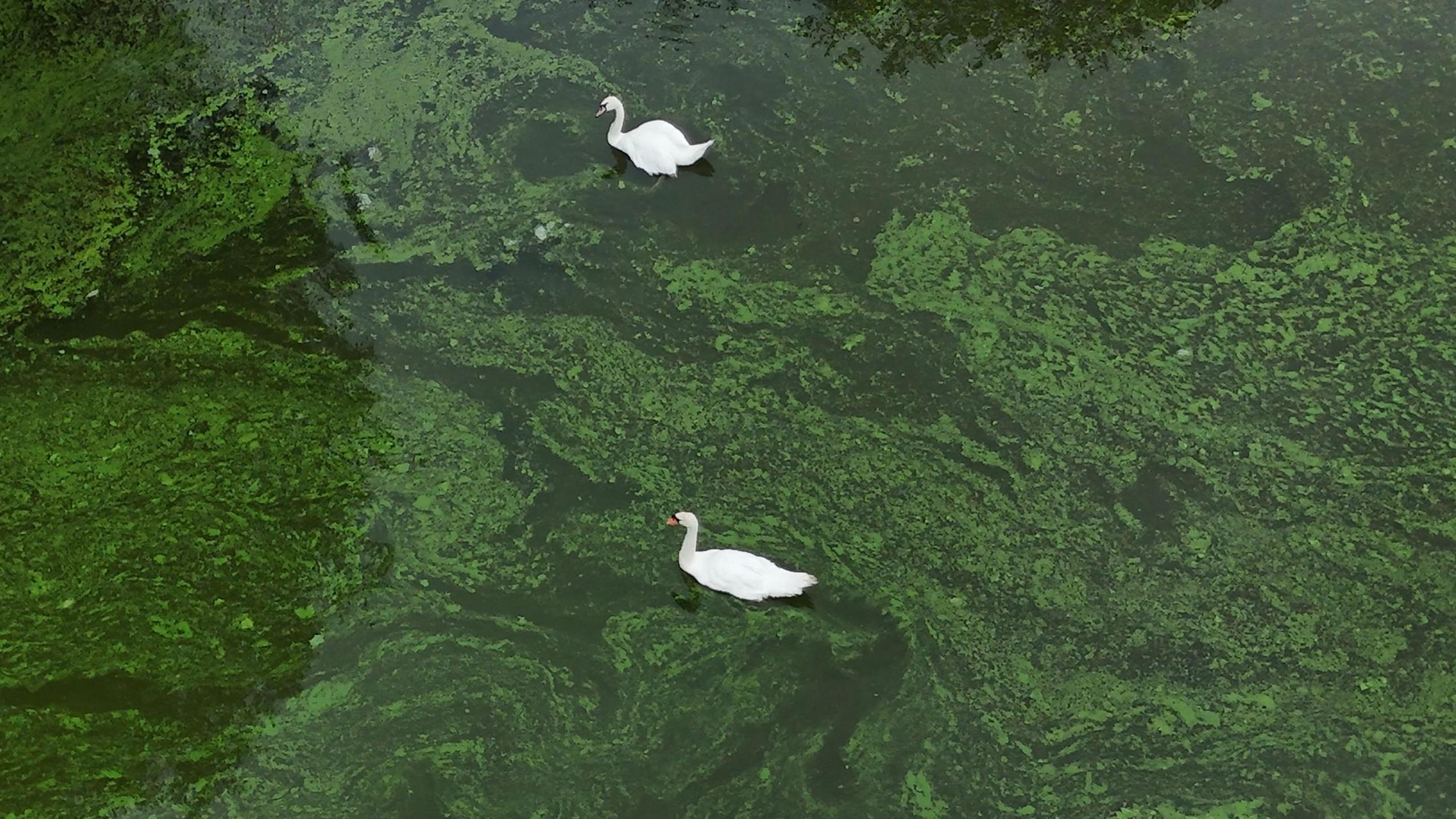
There is a programme that seeks to address water pollution from agricultural sources
What is blue-green algae?
Technically known as cyanobacteria, blue-green algae is a collection of microscopic organisms that are naturally present in lakes and streams.
Under certain conditions, blue-green algae can become abundant in warm, shallow, undisturbed, nutrient-rich surface waters that receive a lot of sunlight.
When this occurs, blue-green algae can form blooms that discolour the water, or produce floating mats or scums on the water's surface.
The algae are bacteria, which can cause skin irritation and sickness in people who come into contact with it, but the biggest risk is to pets, livestock and wildlife.
- Published15 April

- Published6 January
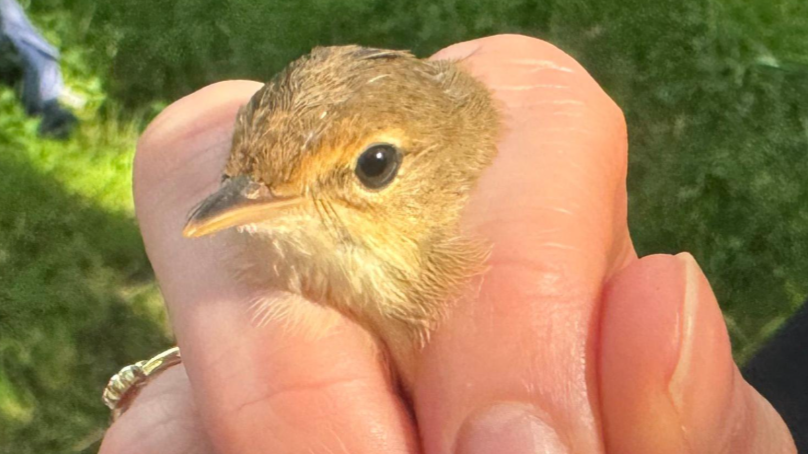
- Published10 April
